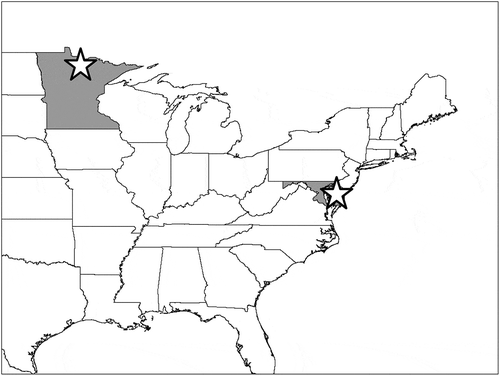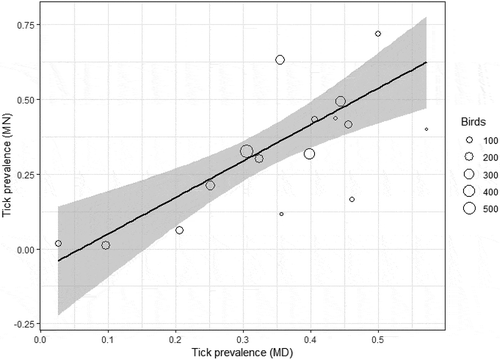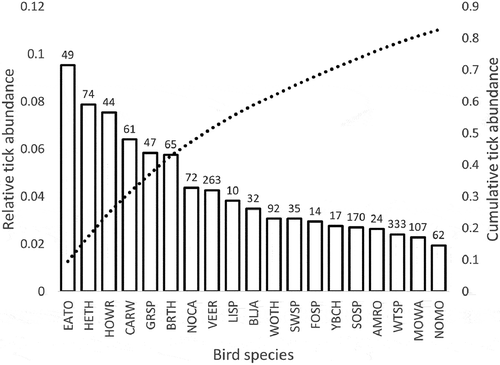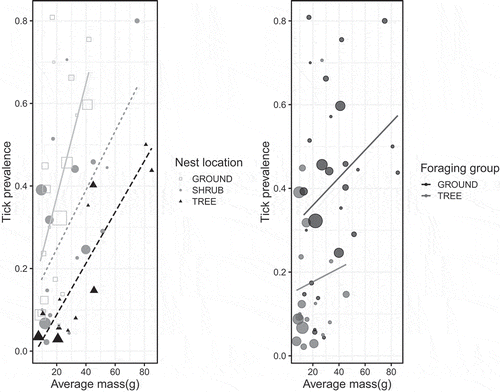Figures & data
Figure 1. Locations of field sampling locations (open stars) in Minnesota and Maryland (shaded polygons).

Table 1. Number and richness of bird and tick species at the Maryland and Minnesota study sites.
Table 2. Numbers of immature Ixodes scapularis and Haemaphysalis leporispalustris collected from birds at each study site. Additional tick species recorded at the Maryland site included Amblyomma americanum (N=29), A. maculatum (N=129), Ixodes brunneus (N=45) and I. dentatus (N=178) with an additional six unidentified ticks.
Figure 2. Tick prevalence in Minnesota on a subset of 16 bird species found at both sites as a function of tick prevalence on those same species in Maryland (F = 21.4, P = 0.0004, DF = 14, adjusted r2 = 0.58), weighted by sample size for each species (‘Birds’).

Figure 3. Ranked relative contribution of each bird species to the total number of ticks from all species (left vertical axis), as well as the cumulative abundance of ticks collected from all bird species, which crosses 50% with the eighth species (VEER; dashed line, right vertical axis). Tick abundance values for each species (calculated as the total number of ticks divided by the total number of individuals) were summed and the relative abundance was calculated for each species (tick abundance on species i divided by summed tick abundance). Numbers above bars represent total sample size for each species pooled across both sampling locations.

Figure 4. Tick prevalence as a function of average mass for a given bird species, coded by nesting location (ground versus shrub versus tree, left) and coded by foraging group (ground versus tree, right). Cavity nesting birds (N = 3) were removed from these plots but did not affect the results of regression analysis. Data points are scaled relative to the number of observations per species.

Figure 5. Tick abundance as a function of average mass for a given bird species, coded by nesting location (ground versus shrub versus tree, left) and coded by foraging group (ground versus tree, right). Cavity nesting birds (N = 3) were removed from these plots but did not affect the results of regression analysis. Data points are scaled relative to the number of observations per species.

